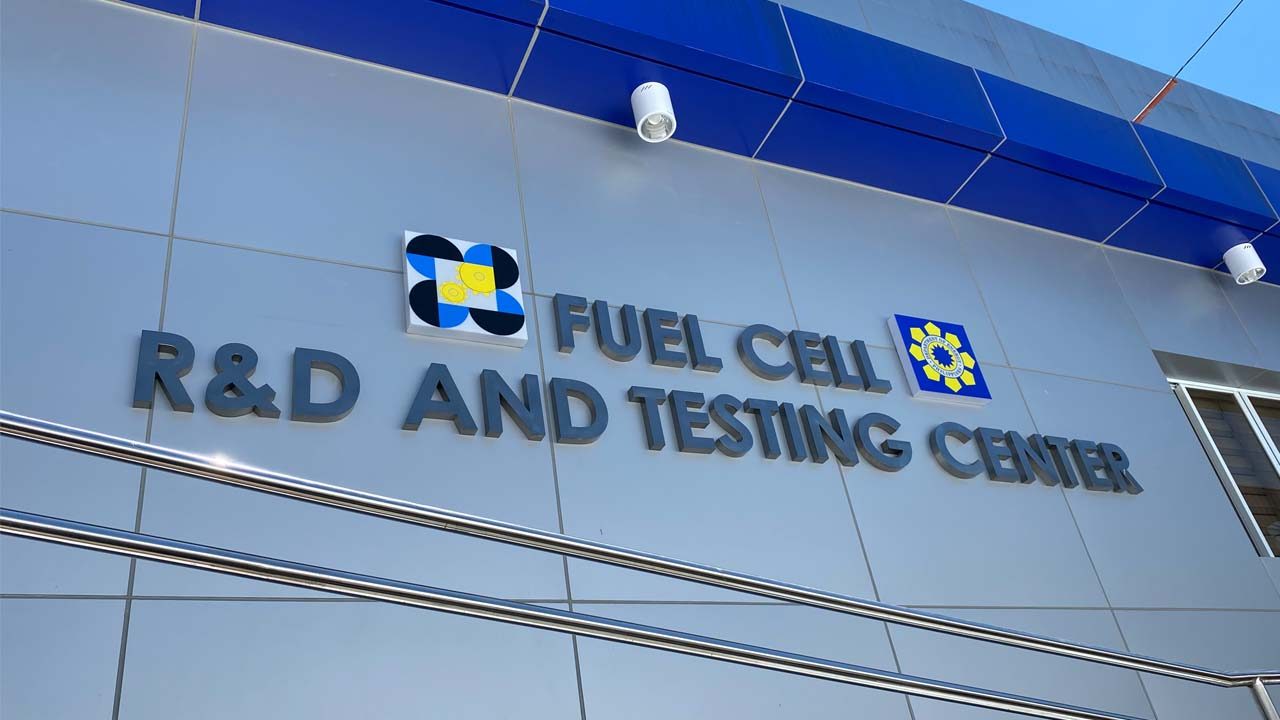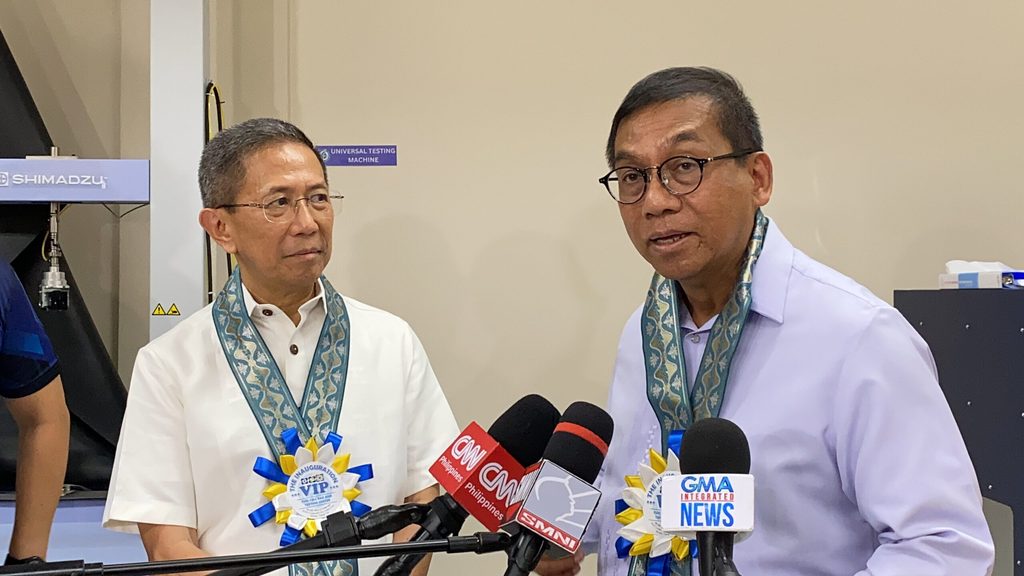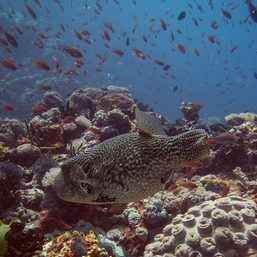SUMMARY
This is AI generated summarization, which may have errors. For context, always refer to the full article.

MANILA, Philippines – Amid energy security issues and the threat of climate crisis, the Philippine government seeks to pioneer research and development of fuel cell technology in the country as a greener energy alternative to fossil fuels.
On Thursday, July 6, the Department of Science and Technology (DOST) and the Department of Energy (DOE) officially opened the Fuel Cell R&D and Testing Center inside the DOST Compound in Bicutan, Taguig City.
The new government research facility is a collaboration between the DOST and DOE, aimed at advancing fuel cells and hydrogen technologies in the country.
Fuel cells work like batteries. But unlike batteries, fuel cells continue to produce energy as long as there is supply of fuel – in this case hydrogen – and oxidant. The electrochemical reaction produced from hydrogen and oxygen’s contact is what generates electricity.
Fuel cells are considered cleaner because their byproduct is just water and heat, unlike fossil fuels whose byproduct is carbon dioxide emissions which worsen climate change. Fuel cells do not emit other air pollutants.
For Energy Secretary Raphael Lotilla, the establishment of this research center is a significant step toward the country’s goal to make its energy mix cleaner.
By investing in technologies such as fuel cell, “we proactively address the issues of energy security and climate change,” said Lotilla.
This technology, if mass produced and already commercially viable, can supply energy for mass transport and energy-intensive industries such as steel production. But it’s still a long way to go before the country reaches these situations.
Science Secretary Renato Solidum said that one example of an immediate application of the technology is in far-flung communities with rotational brownouts.
This is the first government facility of its kind, according to Solidum. But the Philippines is only catching up with other countries.
Solidum shared that when he was taking up graduate studies in the United States in the 1990s, they were already developing their fuel cell research. Of course, the US was using materials already readily available to them. With this new DOST facility, Solidum said they aimed to source local materials.
“‘Yung ginagamit nila doon ‘yung materials na readily available,” said Solidum. “Dito iibahin natin.” (The US used materials readily available to them. Here, we’re going to change that.)

Focus and challenges
Localizing research is one of the main thrusts of the project. And Filipino researchers are looking at waste available at hand.
Currently, the facility is testing cotton linter’s feasibility and durability as material for the membrane of the fuel cell. Other materials for the membrane being studied outside the facility are water hyacinths from the Pasig River and coconuts from Iligan City.
Aside from membrane, the facility is also working on the electrodes which can also be made from existing waste materials. Ronaldo Parreño, project lead in the facility, likened these parts to a sandwich. The membrane goes in the middle of two electrodes. This sandwich, or the membrane-electrode assembly, is considered the main component of the fuel cell that facilitates the generation of the electricity.
The project has a timeline of three years. The building costs P11 million. The DOE gave P35 million for the research center. The team, headed by Parreño – senior science research specialist in the DOST – targets to release a prototype of the design of the fuel cell stack by the end of 2024.
But fuel cell technology, while the cleaner energy option compared to fossil fuels, has its own challenges. Lotilla named a few: cost, durability, and sustainability.
According to the US Department of Energy, what makes the technology expensive is not the materials used but the manufacturing of the fuel cell stack. Building and maintaining hydrogen stations also cost a lot and would need to decrease for a hydrogen economy to thrive.
Since the technology is only in its early stages in the Philippines, early impacts would be hard to see.
But Solidum has big hopes in the facility, especially its impact on local researchers, the opportunities it will open for entrepreneurs, and what it promises for the future.
Beyond the science, Solidum said the center “will foster innovation and economic growth by providing a platform for local researchers and entrepreneurs to develop their ideas and bring them to the market.”
“That’s the most important thing: ideas brought to the market,” the science secretary said. – Rappler.com
Add a comment
How does this make you feel?






![[ANALYSIS] Why do we pay higher power rates when we have power outages?](https://www.rappler.com/tachyon/2024/07/tl-higher-power-rates-higher-power-outages.jpg?resize=257%2C257&crop=401px%2C0px%2C1080px%2C1080px)





There are no comments yet. Add your comment to start the conversation.